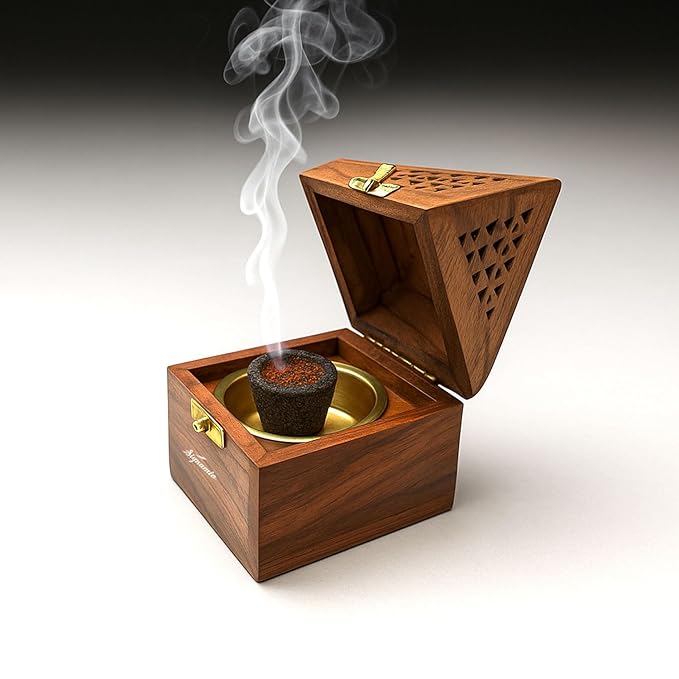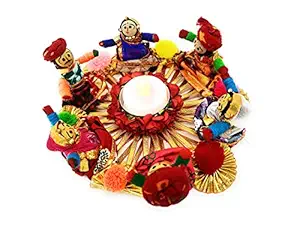પીળી મટુડી લાવીયા ને કઈ
બાંધ્યો પાવાગઢ રે માં,
કાંગરે, કાંગરે દીવા બળે
ત્યાં દીઠો કાળો નાગ રે માં,
તારા નાગને પાછો વાળ રે માં,
તને છતર ચઢાવું જોડા જોડ રે માં
પીળી મટુકડી લાવીયા ને કઈ
બાંધ્યો પાવાગઢ રે માં,
કાંગરે, કાંગરે દીવા બળે
ત્યાં દીઠો વાઘ દીપડો રે માં,
તારા વાઘને પાછોવાળ રે માં,
તને શ્રીફળ ચઢાવું જોડાજોડ રે માં
પીળી મટુડી લાવીયા ને કઈ
બાંધ્યો પાવાગઢ રે માં,
કાંગરે, કાંગરે દીવા બળે
ત્યાં દીઠો કાળો નાગ રે માં,
તારા નાગને પાછો વાળ રે માં,
તને છતર ચઢાવું જોડા જોડ રે માં
Overview of "Pili Matukdi Laviya Ne"
Title & Meaning
'Pili Matukdi Laviya Ne' is a traditional Gujarati Garba song symbolizing festivity, devotion, and cultural pride during Navratri.
Artist & Recording Details
This Garba has been sung by many folk singers and groups, often performed in community Garba events across Gujarat.
Genre & Occasion
A devotional folk Garba performed in Navratri nights, celebrating Maa Amba with music and dance.
Language & Dialect
Lyrics are in Gujarati with local folk expressions, reflecting cultural richness.
Popularity & Versions
Popular in both rural and urban Gujarat, performed in live Garba and recorded in albums.
Lyrics Structure & Themes
Devotional Invocation
The song begins with invoking Maa Amba, seeking divine blessings for the community.
Repetitive Chorus
Refrains and chorus lines make it easy for groups to sing and dance together.
Imagery & Symbolism
The song uses colorful imagery and traditional cultural references to enhance devotion.
Community Togetherness
Highlights unity as devotees gather in circles to celebrate Navratri through Garba.
Emotional Resonance
Creates a vibrant atmosphere of joy, spirituality, and cultural pride.
Musical & Performance Elements
Instrumentation & Rhythm
Traditional dhol, dholak, claps, and manjeera make the rhythm lively for Garba dance.
Tempo & Dynamics
Begins steadily and gradually increases tempo, energizing dancers as the night progresses.
Live vs Studio Renditions
Live Garba includes crowd energy and extended verses, while studio versions are more refined.
Dance Movements
Lyrics guide clapping, circular steps, and spins in traditional Garba formations.
Audience Participation
Encourages everyone to clap, sing, and dance, making it highly inclusive.
Festival & Cultural Significance
Navratri Importance
A celebrated song during Navratri that honors Maa Amba and festive traditions.
Spiritual Meaning
Represents surrender to the Goddess, seeking peace, protection, and blessings.
Preserving Folk Culture
This Garba preserves Gujarati folk culture and heritage passed across generations.
Community Bonding
Unites people across regions through shared Garba singing and dancing.
Joyful Celebration
Brings happiness and devotion, strengthening cultural pride during festivals.
How to Use & Share
Translations & Transliteration
Provide translations for non-Gujarati audiences to understand the devotional meaning.
Audio & Video Embeds
Embed YouTube Garba performances and audio versions to engage audiences.
Printable Lyrics
Offer lyrics in PDF/printable format for learners and community groups.
Performance Tips
Provide Garba dance guides, clapping rhythms, and costume suggestions.
SEO & Social Sharing
Use keywords like Garba, Navratri songs, Maa Amba bhajans for SEO; add sharing options.
'Pili Matukdi Laviya Ne' is a traditional Gujarati Garba song symbolizing festivity, devotion, and cultural pride during Navratri.
This Garba has been sung by many folk singers and groups, often performed in community Garba events across Gujarat.
A devotional folk Garba performed in Navratri nights, celebrating Maa Amba with music and dance.
Lyrics are in Gujarati with local folk expressions, reflecting cultural richness.
Popular in both rural and urban Gujarat, performed in live Garba and recorded in albums.
The song begins with invoking Maa Amba, seeking divine blessings for the community.
Refrains and chorus lines make it easy for groups to sing and dance together.
The song uses colorful imagery and traditional cultural references to enhance devotion.
Highlights unity as devotees gather in circles to celebrate Navratri through Garba.
Creates a vibrant atmosphere of joy, spirituality, and cultural pride.
Traditional dhol, dholak, claps, and manjeera make the rhythm lively for Garba dance.
Begins steadily and gradually increases tempo, energizing dancers as the night progresses.
Live Garba includes crowd energy and extended verses, while studio versions are more refined.
Lyrics guide clapping, circular steps, and spins in traditional Garba formations.
Encourages everyone to clap, sing, and dance, making it highly inclusive.
A celebrated song during Navratri that honors Maa Amba and festive traditions.
Represents surrender to the Goddess, seeking peace, protection, and blessings.
This Garba preserves Gujarati folk culture and heritage passed across generations.
Unites people across regions through shared Garba singing and dancing.
Brings happiness and devotion, strengthening cultural pride during festivals.
Provide translations for non-Gujarati audiences to understand the devotional meaning.
Embed YouTube Garba performances and audio versions to engage audiences.
Offer lyrics in PDF/printable format for learners and community groups.
Provide Garba dance guides, clapping rhythms, and costume suggestions.
Use keywords like Garba, Navratri songs, Maa Amba bhajans for SEO; add sharing options.


